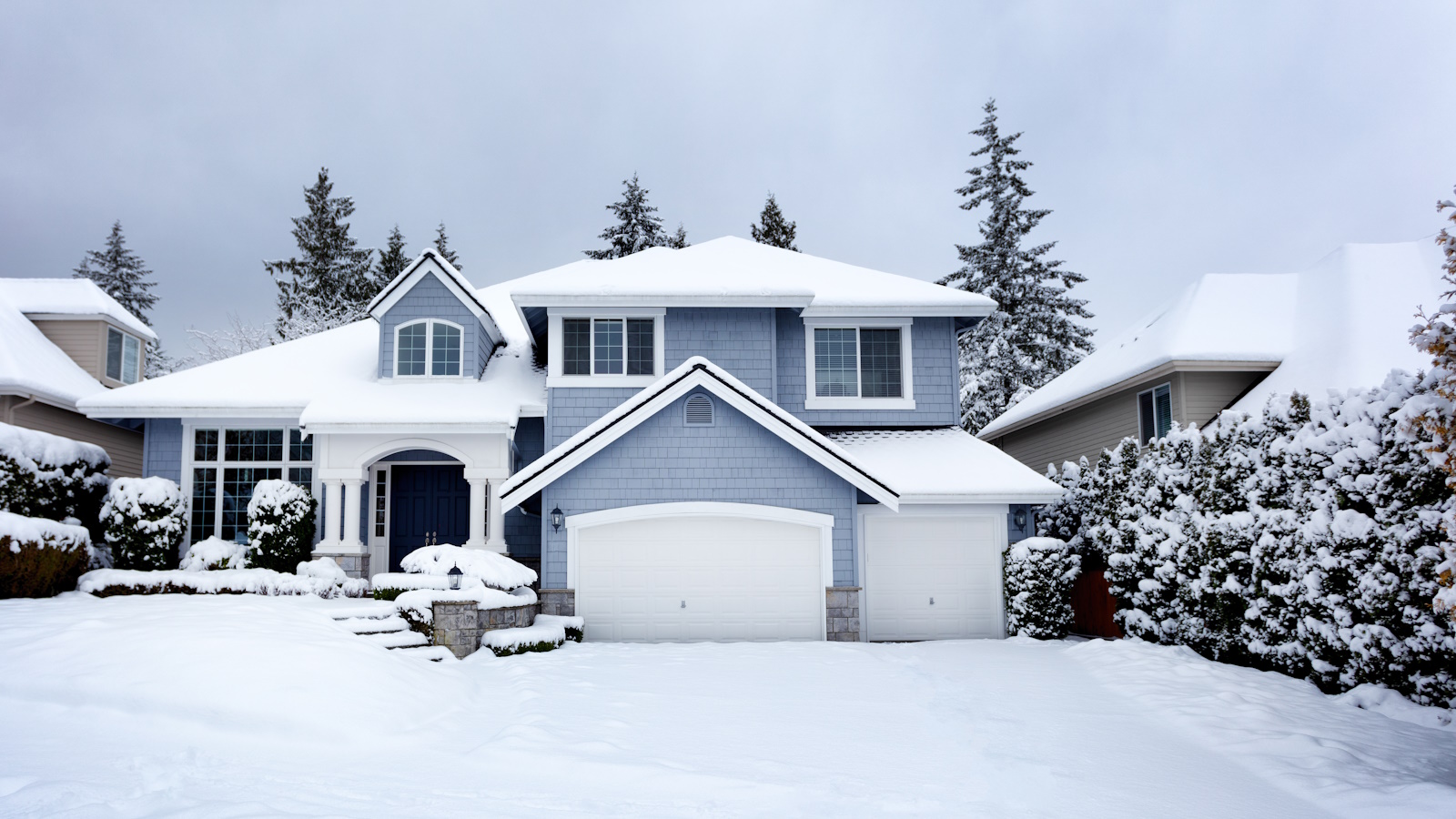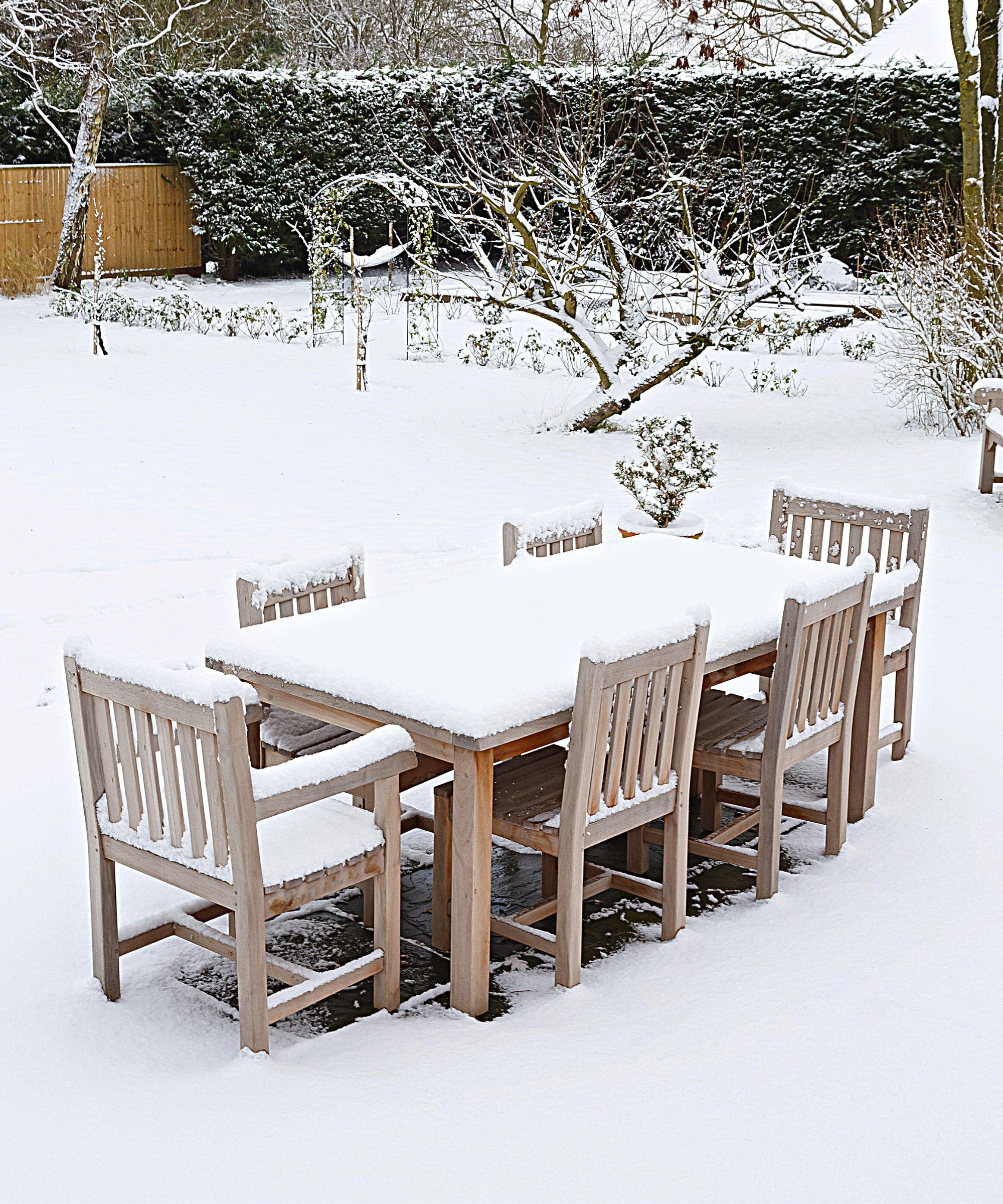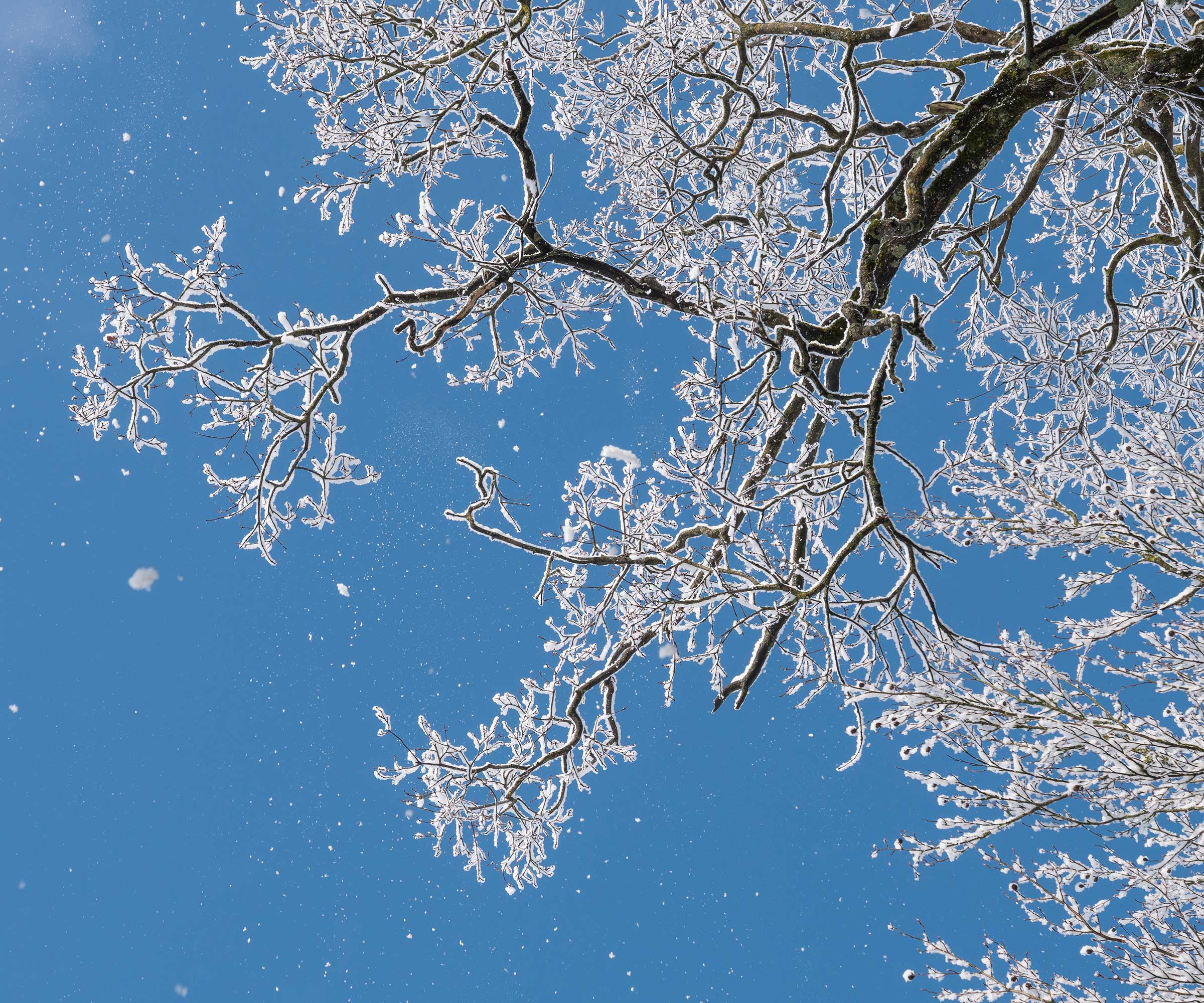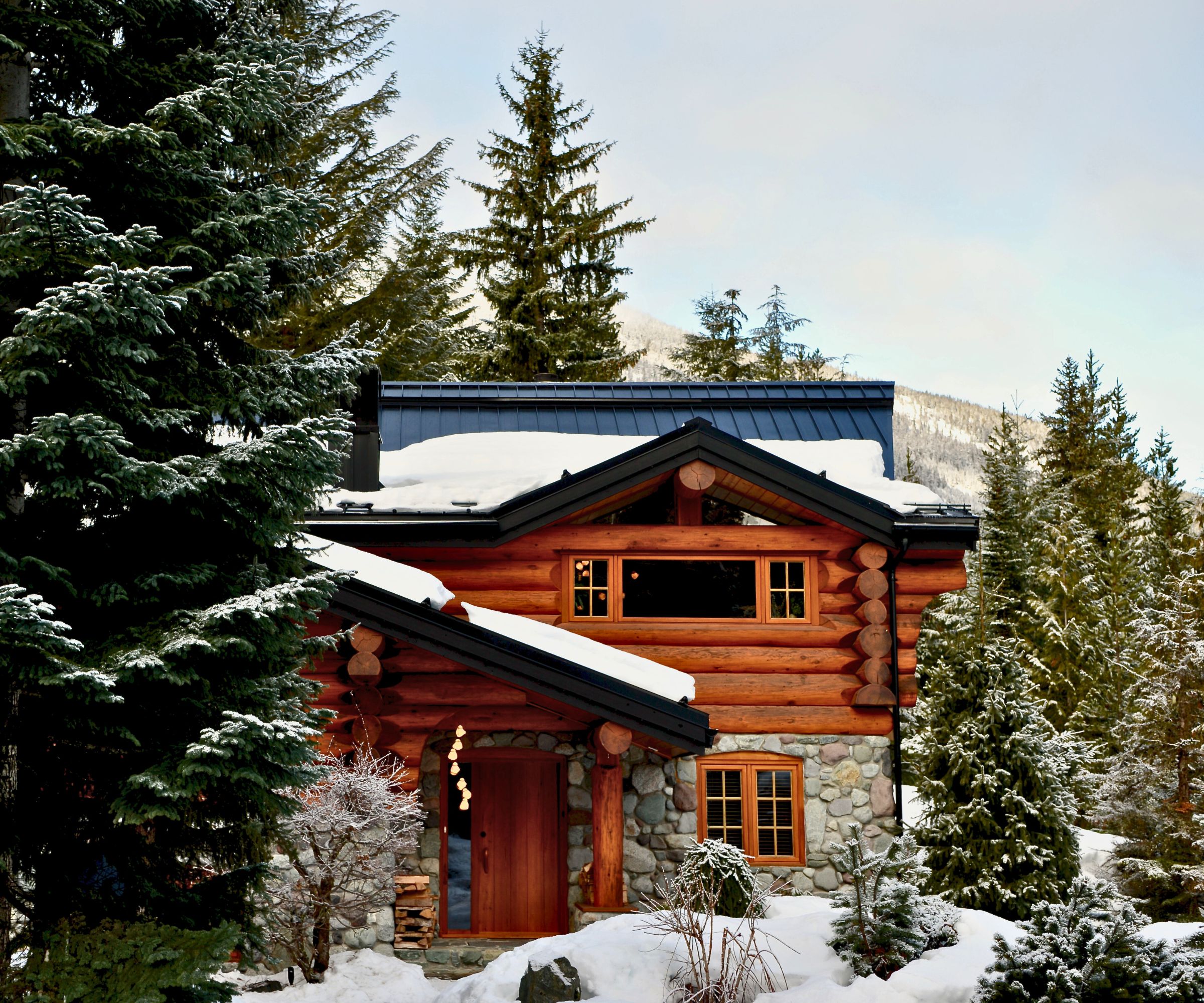4 places you shouldn't clear snow – and why it might be detrimental to your property
You’re better off leaving snow in these four places, experts suggest


Whenever it snows, we are all anxious for it to settle so we can get out and shovel it away, restoring our driveways and yards.
However, while clearing snow from your driveway is often necessary, there are four places experts suggest are best left covered if you want to avoid the risk of damaging them or yourself.
These are the places you shouldn’t clear snow and why it could be dangerous for you or your property.
Places you shouldn't clear snow
Several places would certainly benefit from snow shoveling, and de-icing garden paths and walkways can help prevent nasty slips. That being said, some places, such as your roof or yard, can see more damage from shoveling than from the weight of the snow itself. This is what to avoid:
Driveway Snow Shovel | View at Walmart
When clearing snow from safe places, this wheeled snow shovel is perfect for pushing heavy loads out of the way without damaging your back with lifting.
1. Lawns

It is no secret that snow can damage a lawn, especially if snow mold develops, but shoveling and scraping it off can be far worse, warns Danny House, owner at Oregon Landscape Company. He recommends holding off on shoveling and letting nature melt it naturally instead to save your grass and your back:
‘Snow acts as a natural insulator, protecting your lawn from harsh winter temperatures and preventing frost damage. Plus, clearing it exposes crowns and roots, making them vulnerable to wind and freezing. Just admire the winter blanket.’
So long as you completed your winter lawn care in time, your grass should be just fine come springtime.
Design expertise in your inbox – from inspiring decorating ideas and beautiful celebrity homes to practical gardening advice and shopping round-ups.
Danny has over 16 years of experience and is a jack of all trades when it comes to landscaping skills, having worked in design, construction, repair, and maintenance.
2. Fragile outdoor structures

Insulate your greenhouse by attaching bubblewrap to the frame
Although thick snow is heavy and puts pressure on outdoor structures such as sheds and pergolas, scraping the snow off can add additional pressure – especially if you are working at a funny angle. This can lead to aesthetic damage, or even collapse, warns contractor Adrian Cruz, co-owner of Columbus Concrete Co.
‘Avoid clearing snow from fragile structures like delicate outdoor decorations, fragile fences, or ornamental features to prevent breakage or collapse.’
3. Around trees and shrubs

Heavy snow can cause branches to break
There are several great ways to protect trees from winter weather, but shaking or scraping the snow from the branches is not one of them.
‘While you might want to clear snow piled high on branches, resist the urge,’ cautions Danny House, professional landscaper. ‘That movement can snap delicate limbs. Plus, the snow provides much-needed moisture and protection for plants during the cold months.’
Instead, Danny advocates for letting the snow melt naturally. When it is piled so high up, the chances are it will be the first to melt away anyway.
4. Roofs

There are numerous reasons why you shouldn't attempt to remove snow from your home's roof – among them being the chance you accidentally remove a tile with it and the risk of falling from a height when working in cold and icy conditions.
All in all, roofs are one area not to try and remove snow from, urges a representative at Progressive Casualty Insurance Company:
‘It’s nearly impossible to clear snow from a roof, especially if it has frozen. Trying to remove snow from the roof may also cause further damage, such as using a blower, which may loosen the shingles on your roof. Another method to not attempt is running water over the snow to encourage melting; this can backfire and lead to the formation of ice dams. Depending on the circumstance, ice dam removal may not be covered by your home insurance policy,’ they warn.
It is often a far better approach to prioritizing winterizing your home, checking for roof and gutter damage before the snow arrives so you have peace of mind that it will stand up to the additional weight and influx of cold weather. Ensuring your attic is heated or leaving your attic door open in a freeze, for instance, can help to prevent ice dams and encourage the natural melting of snow without the need to get up there on a ladder.
FAQs
What should you not do when clearing snow?
When clearing snow from safe places such as pathways and driveways, it is important not to rush. Rushing when trying to scrape snow could cause you to slip or fall, leading you into the bad habit of shoveling and lifting the snow to move it – putting pressure on your arms and back rather than just scraping it out of the way.
Should I clear snow from the sidewalk outside my house?
Whether or not you should clear the snow from the sidewalk outside of your house comes down to your state's local laws. Some states require that homeowners take proper care of the sidewalk area directly in front of their homes, meaning it is their responsibility to clear it of snow (they may also have rules about how to do it and where to place the shoveled snow). Other states ask homeowners to leave it for a professional team – especially in busy built-up areas or priority streets. To be safe, it is important to check your local rules before shoveling.
If and when you do clear snow from around your property, it is important to be mindful of where you pile the cleared snow, adds professional landscaper Danny House. ‘Pushing it onto the street can block traffic and drainage, potentially leading to fines,’ he warns. While piling it up near your home could cause mold on siding or block important vents.
‘Instead, create designated snow storage areas on your property, away from sidewalks, driveways, and sensitive areas,’ he recommends. Having this area somewhere where the sun hits regularly can help the melting process when the weather clears up.

Chiana has been at Homes & Gardens for two years and is our resident 'queen' of non-toxic living. She spends most of her time producing content for the Solved section of the website, helping readers get the most out of their homes through clever decluttering, cleaning, and tidying tips. She was named one of Fixr's top home improvement journalists in 2024.
